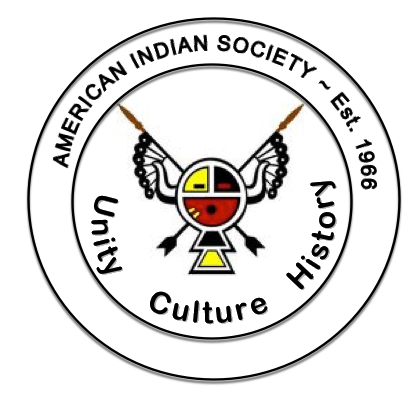Over the years, Indigenous People representing many tribes, bands, and nations have moved into the metropolitan area of Washington, DC. With them, they brought their respective ancestral traditions, languages, and histories. Always, they looked for companionship with others who would understand similar experiences and heritage.
Fifty-five years ago, Indians living in the Washington area decided to form a group that would fill the need for a central organization representing as many tribes as possible. They formally organized in August of 1966 as the American Indian Society (AIS) of Washington, DC with a constitution, by laws, and elected officers. The young group of less than 20 original members slowly grew. The numbers have fluctuated with people moving back to their homes or to area offices. They have represented many different tribes spanning across the USA.
The Society’s goals are to preserve Indigenous culture and perpetuate Indigenous traditions, promoting fellowship among members of all American Indian tribes, nations, and bands, as well as Alaskan Natives. AIS also seeks to educate the public, encourage better understanding of Indigenous issues that directly affect Indian Country, and assist American Indians in their academic studies by establishing a scholarship fund which also includes the support of vocational training.

Simultaneously, paid performances are requested by local television and radio stations, scouts, schools, church, civic and social groups, governmental agencies, foreign embassies, etc. The members feel that in this way they reach the largest number of people – those who might otherwise never see an authentic American Indian tribal dance or hear real American Indian music. Equally as important, each paid
performance brings the group closer to its scholarship fund goal for American Indian Students. Scholarships are generally awarded in August of each year at the Anniversary Celebration but are temporarily on hold until we recoup from Covid-19 impacts.
These goals are achieved in several different ways. Business meetings are held on the first Wednesday of the month. Members are encouraged to learn traditional arts and crafts, songs and dances of their respective tribes, and share their knowledge with others who request teaching. AIS responds to requests for Indigenous performers at charity benefits, especially those supporting children and impoverished communities, as well as those hospitalized.
Simultaneously, paid performances are requested by local television and radio stations, scouts, schools, church, civic and social groups, governmental agencies, foreign embassies, etc. The members feel that in this way they reach the largest number of people – those who might otherwise never see an authentic American Indian tribal dance or hear real American Indian music. Equally as important, each paid performance brings the group closer to its scholarship fund goal for American Indian Students.
Scholarships are awarded in August of each year at the Anniversary Celebration.
AIS social activities are intended to promote greater communication and friendship within the intertribal community, increasing a sense of Indigenous unity. Some activities include formal ceremonies and receptions for tribal delegates and other distinguished visitors to the Capital Region, hosting events with American Indian organizations in other Eastern cities and participating in various Inaugural activities including the recurring Indigenous Inaugural Ball.
AIS member activities vary from bowling, skiing, bicycling, and white-water rafting to dances, suppers, picnics, trips, craft nights, and drum practices. Social events are not limited to members and are open to promote a sense of community for all Indigenous People in the Washington Metro area. A favorite AIS tradition is the Annual Thanksgiving Dinner, filled with traditional Indigenous foods and fellowship. AIS used to end the day with an evening with a drum group and social dances for all. Started as means to provide comfort and companionship for those unable to return home for the holidays, it has grown to be a special time for our organization.
One of major goals was the purchase of 46 acres of unimproved timber land in Virginia, which was achieved in 1976. The land, named Indian Pines, serves as a refuge from the hectic life of Washington, DC and provides a place of our own for harvesting berries, sassafras root, nuts, persimmons, and holly. Indian Pines is also host to AIS campouts and in some past years, a summer camp. AIS has also cleared an area for a dance arena and has used this for small pow wows. A memorial wall was created
by the dance arena to honor those members who have passed and those who served in the Armed Forces. There were already some graves on the land and we have created a memorial garden that is also a resting place for some of our members. AIS was able to provide the location for several Longest Walks participants to camp while on their way to Washington, DC.
Another important AIS endeavor is the cleaning and commemoration of Indigenous grave sites in the region. 1970 saw the beginning of this tradition at Arlington National Cemetery followed in 1971 by the US Congressional Cemetery, in 1972 commencing grave maintenance for the children buried on Carlisle Barracks who died attending the Carlisle Indian Industrial School, expanding to the Washington National Cemetery in 1979, Cedar Hill in 1983, and graves maintained at Quantico and
Indian Pines. Honoring those buried in those locations continues to be a priority for the American Indian Society of DC.
Membership in the Society, while primarily focused for American Indians and Alaskan Natives, is open to anyone who has an interest and respect for the American Indian People.
